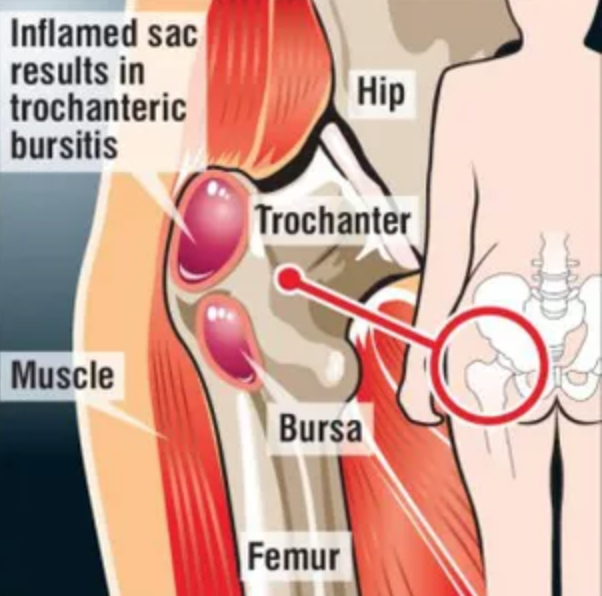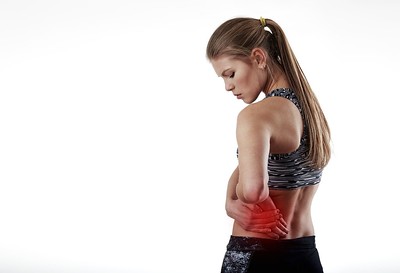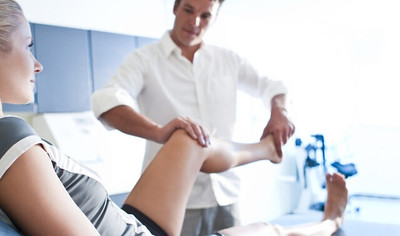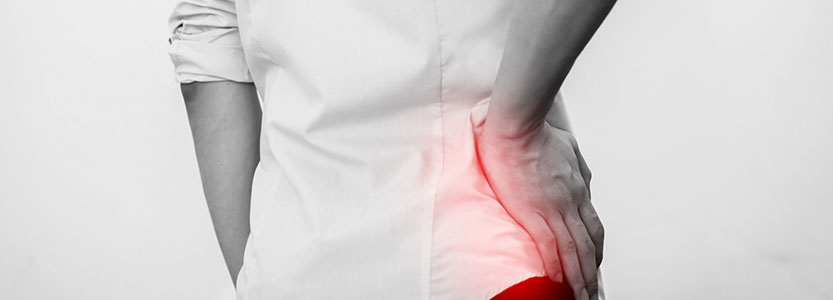What is Hip Bursitis?
The hip joint is one of the largest and strongest joints in the Human Body. It is an amazing piece of equipment, a very strong ball and socket structure, giving us power and stability when we walk, run and jump. But it can take a beating, especially if we do a lot of serious walking, running or cycling.
Hip Bursitis is inflammation and swelling of the bursa - fluid-filled sacs found all over the body near a joint. The bursa sacs are there to serve as cushions to protect your bones from friction with soft tissues such as muscles, tendons and skin. When it comes to your hip, the outside bursa (Trochanter Bursa) is the most prone to inflammation. When this happens, you have 'trochanteric bursitis', also known as greater trochanteric pain syndrome (GTPS). It is a common condition that we see here at The House Clinics, Bristol. But the good news is that Chiropractic and Physiotherapy can be effective in its treatment.

What Causes Hip Bursitis?
Misalignment of the hip joint from its centralised point due to muscular tightness or imbalance of the hip muscles or pelvic joint can all contribute to bursitis, so it is important that all of these factors are investigated to understand the cause of the inflammation. Perhaps you have recently been on a hiking holiday, or have been doing a lot of jogging or running on uneven ground, or cycling? Or maybe you had a fall, landing on the area. Although it is commonly thought of as an 'overuse' injury, there are other important factors that can put you at risk...
- Sports activities such as running, cycling, tennis, squash and even walking, can all make you more prone to bursitis due to the repetitive motion and pressure put on the hip joint. The side of the leg includes a long piece of connective tissue called the iliotibial band (ITB), which runs from the hip to the knee. If the ITB is tight from hard use, it may rub against the trochanteric bursa and cause irritation, leading to bursitis.
- Occupation or hobbies - Manuel Jobs such as carpet-laying, plumbing, road working, painting and landscaping can all put added pressure on your hip joint, while gardening is a common hobby that can also put you at risk.
- Hip injury - an injury to the point of your hip can occur when you fall onto your hip, bump your hip, or lie on one side of your body for an extended period of time.
- Previous hip surgery - surgery around the hip or prosthetic implants in the hip can irritate the bursa and cause bursitis.
- Leg-length inequality - when one leg is significantly shorter than the other, it affects the way you walk and can lead to irritation of the hip bursae.
- Age - bursitis becomes more common with ageing.
- Other medical conditions - certain systemic diseases and conditions such as rheumatoid arthritis, gout and diabetes can all increase your risk of developing bursitis. Being overweight can also increase your risk of developing knee bursitis.
What Are The Symptoms of Hip Bursitis?
Sufferers often present with pain on the side of the hip, often spreading down the outside of the thigh and tender to the touch.

The main symptom of hip bursitis are:
- Hip tenderness. Pressing on the skin over the outer hip typically causes pain. Similarly, lying down on the affected side and putting weight on the hip may cause a sudden and sharp increase in pain.
- Initially, the pain may be painful to the touch, primarily over the point of the lower hip. Over time, the pain may radiate down the outside of the thigh or to other points in the body, such as the lower back, buttock, or groin, and may extend down the outside of the thigh towards the knee.
- Pain that is worse with repetitive activity. The pain may intensify after prolonged repetitive hip movements, such as with walking, jogging, cycling or stair climbing
- Pain that is worse after prolonged inactivity. Most patients describe that the pain is worse after sleeping or after being seated for a while.
- Pain at extreme range of motion. Some patients may experience pain during extreme rotation, hip adduction (using the hip to move the leg past the centre midline of the body), or hip abduction (using the hip to move the leg away from the body). When hip bursitis is caused by a tight IT band, adduction can cause pain and abduction can relieve pain.
- Often, the pain can be worse at night and affect your sleep.
If you think you have hip bursitis, you can try some simple remedies at home...
- Ice - apply ice packs to your hip every 4 hours for 20 to 30 minutes at a time. It is important to do this regularly to see if this is effective and reduces the inflammation.
- Anti-inflammatory medications - over-the-counter medications such as ibuprofen can be effective. If you visit your GP and bursitis is suspected, you may be prescribed a stronger inti-inflammatory such as Naproxen.
- Rest - It is important to reduce those activities that provoke your pain. If you know certain activities bring it on, then try cutting them out for a period to see if this resolves the problem. You could also try simple stretching exercises such as these...
When Should I Seek Professional Treatment For Hip Bursitis, Such As Chiropractic or Physiotherapy?

It is important to seek professional treatment from an experienced Chiropractor or Physiotherapist when the above remedies don't work and the pain becomes invasive.
Crucially, A Chiropractor or Physiotherapist is best able to diagnose the cause of your hip bursitis and then prescribe the most effective treatment. In an
initial consultation, the history of your pain and activities will be evaluated, followed by a physical examination. A diagnosis is then explained to you along with a suggested treatment plan.
Treatments may include:
- Remedial massage can be very beneficial if your bursitis is caused by tightness of the muscles attached to the greater trochanter which causes irritation to the bursae (i.e your glutes, medius and piriformis).
- You may be given prescribed exercises to increase hip strength and flexibility. Stretching of the muscles in the hips, buttocks and thighs can relieve the irritation of the bursae, and in order to improve the efficiency with which these muscles support your sporting activities, you may also be given strengthening exercises as par6t of a conditioning programme.
- Dry Needling can be as effective as a cortisone injection and is a treatment technique whereby a single-use, fine filament needle (acupuncture needle) is inserted into the muscle to reduce inflammation and pain through the release of myofascial trigger points (knots in the muscle).
In some cases, recovery can be a matter of weeks and in others, it may take a bit longer to fully recover and avoid repeat flare-ups. Most importantly, your chiropractor or physiotherapist will be best placed to establish sensible and achievable goals with you, with a view to getting you pain-free and back to normal activities.
If you think you are struggling with hip bursitis, you can talk to one of our Chiropractic or Physiotherapist team for advice 0117 9420200
To book a chiropractic or physiotherapist consultation call 0117 9420200 or make your appointment online here
Written by
Jonathan Cook established The House Clinics in 1987 with a dream to create a team of professionals under one roof specializing in the treatment of all types of physical pain. Jonathan is a highly experienced Chiropractor, registered with The British Chiropractic Association.




